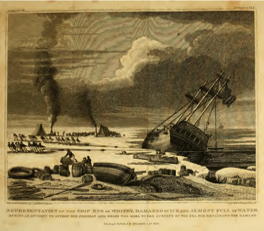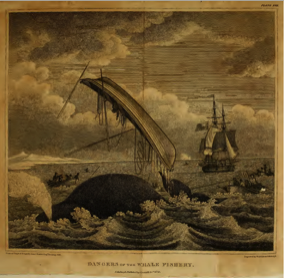Raith of Leith - Whaler
Because of the name, mention should also be made here of another whaler besides the Margaret Rait - the 295 ton sailing vessel Raith of Leith which had a total of 35 seasons from 1785-1819 under a number of different captains. Sailing mainly in the Davis Strait she usually caught at least four or five whales per voyage, with 12 being the highest number twice, 11 whales twice and 10 whales four times. Sailing in East Greenland waters she also caught seals - as many as 1440 in 1787.
Arctic hunting grounds were defined by bowhead migrations and the seasonal advance and retreat of pack-ice. Scottish Northern whaling was thus a distant, remote, and hazardous ice-edge operation - of the 247 vessels which participated between 1750 and WWI, more than half failed to return. The Aberdeen Journal for 13 October 1830 under the heading Davis Straits Fishing published a list of ships lost at the Northern Whale Fishery since the year 1819, when they first attempted to cross Davis' Straits. Prior to then, casualties at Greenland and the Davis' Straits averaged only two or three ships in a season but up to 1830, 75 vessels had been lost, one of which was the Raith of Leith in July 1819 (in fact one of 12 whalers lost that year).
The Raith (sometimes erroneously given as Raitt in the press) was a 295 tonnage vessel owned by Peter Wood and Company of Leith and the story of her demise (and that of another of Woods's ships the Thomas & Ann) is told in an earlier newspaper article which gives some idea of the conditions and dangers whaling crews faced in Arctic waters.
The Caledonian Mercury dated 18 September 1819 quotes a letter from a Captain of one of the lost vessels, published in an Edinburgh newspaper on 10 September. He wrote "The destruction of so many ships in one season, I believe, is unprecedented. No person who has not visited these northern regions can form (even from the most correct description) a just idea of those immense masses of ice called icebergs, and of those heavy sheets of ice called flaws, which, when set in motion by a gale of wind, spread destruction wherever they are wafted.
"As I am lately returned from the Straits of Davis, my mind, is still pregnant with the tragic scenes which were there presented to my view.
"On the morning of the 7th of July, the Mary Ann of Dundee, and the Raith of Leith, were seen totally wrecked, their masts were level with the ice. On the evening of the same day I visited the wreck of the Mary Ann, and found a number of their crew, along with those of other ships, assiduously engaged in getting hold of provisions, and any article of value. The crews of both ships were saved. We had on board our ship eight men belonging to the Raith. As our situation was critical, our only safety was being placed in dock. Docks are spaces cut out in the fast ice, by means of saws constructed for this purpose, in which the ships are placed, forming a safeguard to the pressure of the floating ice. Our dependence was placed upon our docks, but, alas! our trust proved of no effect. --- On the morning of the 14th two other sail were seen destroyed, not far distant from our ship; we sent a boat's crew for information, and they reported them to be the Equestris from Hull, and the Sisters of Kirkcaldy; their docks gave way from the excessive pressure of an ingress of ice. On the morning of the 16th of July a strong gale arose from the south-west, and we observed at an early hour, from the top-mast, that a quantity of heavy flaws were put in motion, and were setting in fast upon us. There were four ships all placed in docks (to one of which I belonged), namely the Majestic of London, Tay of Dundee, and the Royal Bounty and Thomas and Ann of Leith. At three p.m. the inevitable fate of our feeble barks appeared certain, although now and then a feeble ray of hope gladdened our hearts with the idea that our docks would stand the squeeze. All our hope were delusive, for at four p.m. the space of water between the destructive masses of ice and our docks was little broader than a canal; at five they were near at hand, and the collision of one piece against another conveyed a sound similar to a peal of distant thunder; at twenty minutes past five the ice, which was running at the rate of three knots an hour came in contact with the most windward dock, where the Tay and Majestic were stationed; in a moment our ears resounded with the destructive crash; in a few seconds afterwards the Royal Bounty and Thomas and Ann shared the same fate. No language can picture a state more truly alarming. The appalling cry of leave the ship, leave the ship, sounded from every quarter. The majority of the men saved their luggage, although a great number sustained serious loss. We next made tents upon the ice with spars and sail-cloth, and spent the night in a most ship-wrecked state amidst a thick fog and showers of snow. Fahrenheit's thermometer stood at four degrees below the freezing point...... [the article continues for a bit longer].
The Dexterity of Leith, which had left Scotland, in company with about 30 ships had poor fishing, so some 15 ships penetrated through the ice to the northward of 75deg. Dexterity left the ice on 21 July in lat. 75 and eventually returned back to Leith on 20 August 1819 with many of the crew from the ten lost vessels.
As an aside, it should perhaps be noted that the Raith's sister ship, the Thomas and Ann brought back to Leith on 15 August 1816 with 11 fish (whales), a very special passenger named John Sakeouse - a Kalaaleq or Inuk (Inuit) from West Greenland and the first of his people to travel to Scotland, who sadly died of fever in Edinburgh in February 1819 aged 22.
The images below show the Arctic Regions, the extent of Arctic ice in 1806, 1817 and 1818 when the Raith was there, and the dangerous situation on the ice.
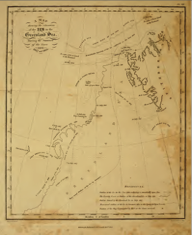
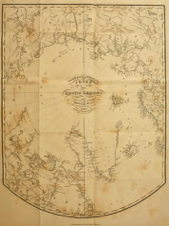
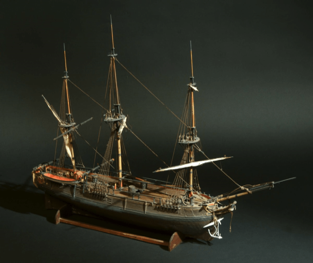
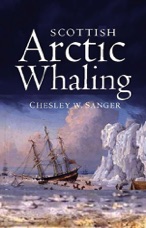
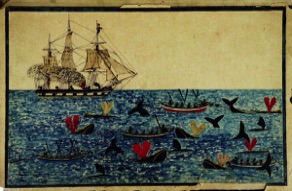
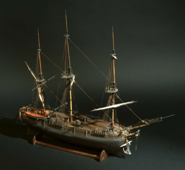
The Raith is mentioned in a book by Yorkshire man William Scoresby (1789–1857) - an English whaler and Arctic explorer. His father, also William, made a fortune in the Arctic whale fishery and was also the inventor of the barrel crow's nest. William Jnr made his first voyage with his father at the age of eleven, and later accompanied his father as chief officer of the whaler Resolution. The extract below and images are taken from his two volume work "An account of the Arctic regions with a history and description of the northern whale-fishery" published in 1820.
"Captain Lyons, of the Raith, of Leith, while prosecuting the whale-fishery on the Labrador coast, in the season of 1802, discovered a large whale at a short distance from the ship. Four boats were dispatched in pursuit, and two of them succeeded in approaching it so closely together, that two harpoons were struck at the same moment. The fish descended a few fathoms in the direction of another of the boats, which was on the advance, rose accidentally beneath it, struck it with its head, and threw the boat, men, and apparatus, about fifteen feet into the air. It was inverted by the stroke, and fell into the water with its keel upwards. All the people were picked up alive by the fourth boat, which was just at hand, excepting one man, who, having got entangled in the boat, fell beneath it, and was drowned. The fish was soon afterwards killed."
The engraving at right below which forms the frontispiece to volume 2 of Scoresby's book, was executed from an original drawing by James Waddel, Esq., and is illustrative of this accident. The image below at left is a model of the Leith whaler Raith.
In fact, Arctic ice was not the only hazard the Raith faced. She too was captured in the Napoleonic Wars and the incident is mentioned on that page.
